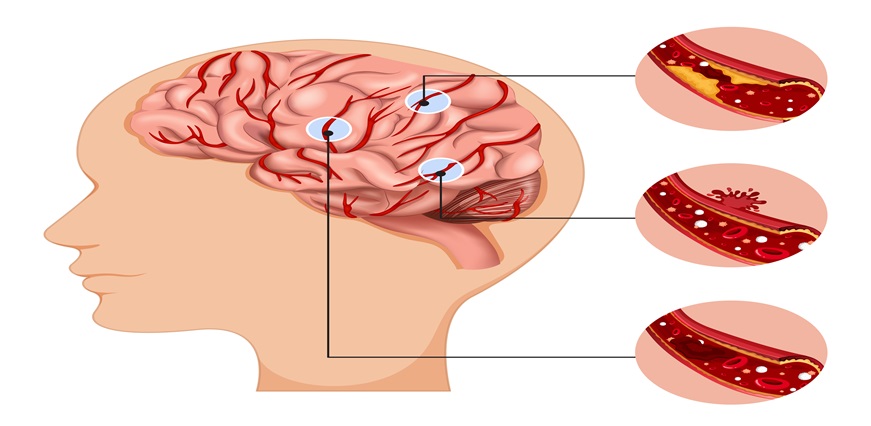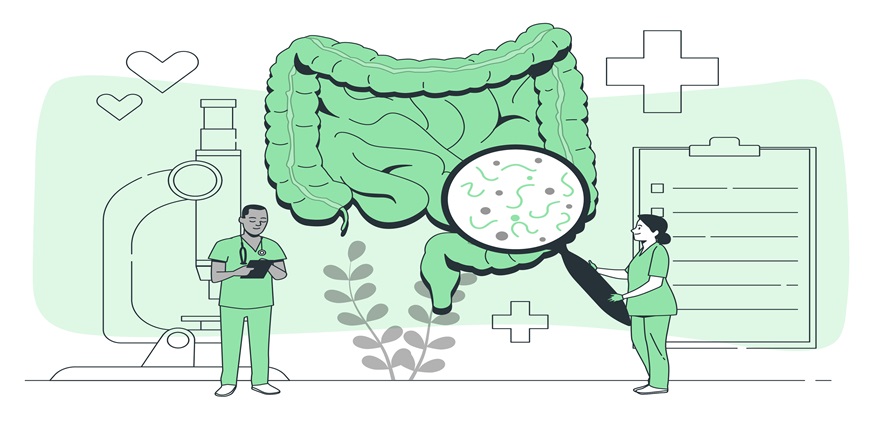





No lab centers are available in this city

Max Lab
Feb 21, 2024
A brain stroke, also known as a brain attack, occurs when the blood supply to the brain is either blocked by a blood clot (in case of an ischemic stroke) or if it bursts (in case of a haemorrhagic stroke). In either case, parts of the brain may get damaged or die, which can cause lasting brain damage, long-term disabilities, or even death. Here’s more about what a brain stroke is, the top reasons behind a brain stroke, treatment, and some early symptoms of a brain stroke that one should look out for.
The brain is the most important organ that controls movements, stores memories, and helps source thoughts and emotions. It also helps control all important functions within the body, such as digestion and breathing. The brain is helped by the arteries which deliver oxygen to all the parts of the body and which the brain needs to be able to function properly. If a blood clot happens to block the flow of blood to the brain or if one of the vessels carrying oxygen to the brain were to burst, it could result in a brain stroke. In both cases, whether it is an ischemic stroke or haemorrhagic stroke, the brain cells begin to die within minutes due to a lack of oxygen supply to the brain.
Acting quickly is critical if an individual starts displaying signs of brain stroke.
It is crucial for everyone to have knowledge about what the symptoms of a brain stroke look like, to be able to spot the signs of a brain stroke quickly. For years now, the acronym, F.A.S.T., has been used to educate people about recognising the signs of a brain stroke. However, with time, it was surmised that up to 14% of stroke cases may get overlooked based solely on the symptoms described in F.A.S.T. That is when two new Variations, F.A.S.T.E.R and B.E. F.A.S.T.E.R., came into being.
F.A.S.T
F Stands for Face: Sudden numbness or weakness of the face that makes the face droop, usually only towards one side of the body.
A Stands for Arms: Sudden numbness or weakness in the arms is another sign. A person may be unable to raise one or both of the arms, even if asked to.
S Stands for Speech: The person may suffer loss of speech or face difficulties in being able to talk or understand speech.
T Stands for Time: This stresses how critical it is to act quickly if an individual starts displaying signs of a brain stroke.
B.E. F.A.S.T.
B Stands for Balance: Sudden issues with balance and coordination.
E Stands for Eyes: Vision suddenly getting blurry, seeing double, or a loss of vision in one or both eyes is another symptom to look out for.
F.A.S.T.: Remains the same as before.
F.A.S.T.E.R.
Here, F and A remain the same as before, S stands for stability (same as balance), T stands for talking (same as speech), E becomes eyes, and R stands for ‘React, which is also a reminder to react quickly and get medical attention.
Other symptoms of a stroke may include numbness of the limbs or face, especially in only one side of the body, sudden confusion, and a sudden, severe headache.
There are three primary types of stroke in the brain, the reasons behind which may also vary.
Transient Ischemic Attack
A transient ischemic attack, TIA for short, is sometimes referred to as a ministroke. This occurs when the blood flow to the brain gets blocked, but only for a short period, usually less than five minutes. This type of stroke reverses on its own.
Ischemic Stroke
An ischemic Stroke is the most common type of brain stroke. It occurs when blood clots or plaque build-up block the blood vessels to the brain. In this type of brain stroke, symptoms usually last longer, and may even become permanent, as compared to a transient ischemic attack.
Haemorrhagic Stroke
A haemorrhagic stroke happens when an artery in the brain ruptures or starts leaking blood because of extreme pressure on the brain cells. High blood pressure, overtreatment with blood thinners, bulges or weak spots in the blood vessels, head trauma, etc., are some of the leading causes behind a haemorrhagic stroke.
In all three types of strokes in, brain cells do not receive the oxygen they need, which can ultimately lead to brain damage or even death. Regardless of the type of brain stroke, the sooner an individual receives treatment, the better their chances of recovery from the brain stroke.
Brain strokes are usually diagnosed by a physical examination or by studying scans of the brain using an imaging test. A healthcare provider will ask about the symptoms being experienced and if there is any history of brain strokes in the family. What causes a brain stroke may vary from case to case, so the doctor takes the patient's medical history to find out risk factors for a stroke, such as medication they are on, blood pressure, and heartbeat. To suggest a treatment plan, the healthcare professional will evaluate the patient for their balance and coordination, weakness, numbness in arms, face or legs, signs of confusion or vision issues, if any.
A doctor may prescribe several tests based on the severity of the symptoms that the patient is experiencing to determine the root cause of the brain stroke. The tests may include:
Blood Tests
A blood test is taken to determine blood sugar levels, presence of infection, platelet count, blood clot intensity, cholesterol levels, etc.
MRI and CT Scans
Based on the severity of the condition, a doctor may suggest an MRI, CT Scan, or both. An MRI will help determine whether brain cells or tissues have been damaged, while a CT scan will help provide a clear picture of the brain to help suggest a treatment plan.
EKG
EKG, short for electrocardiogram, is an essential test that records the heart's electrical activity. It records the heart’s rhythm and how fast it is beating.
Cerebral Angiogram
A cerebral angiogram gives a detailed analysis of the neck and brain arteries. The test can help detect any blockages or clots in the arteries.
Carotid Ultrasound
The ultrasound helps doctors detect fatty deposits in the carotid arteries, which supply blood to the face, neck, and brain. The test also shows whether the carotid arteries have been blocked or narrowed, causing an interruption in the flow of oxygen-rich blood to the brain.
Echocardiogram
The test helps determine the source of blood clots in the heart that may have travelled to the brain to cause a stroke.
The treatment plan for brain stroke varies depending on the type of stroke an individual is experiencing, whether it is an ischemic or haemorrhagic stroke. The treatment plan for both types of brain strokes is explained below:
Ischemic Stroke
For recovery from an ischemic brain stroke, doctors prioritise restoring blood circulation to the areas of the brain. They do this by prescribing a type of medication known as thrombolytics. The treatment plan for ischemic stroke sometimes involves a catheterisation procedure.
Haemorrhagic Stroke
Treatment for haemorrhagic stroke depends on the severity of the bleeding and the location of the bleeding in the brain. In such scenarios, doctors prioritise reducing blood pressure, which ultimately helps reduce blood flow. Another treatment is to remove the blood clot by surgery or medicines to relieve pressure on the brain from blood accumulation.
To conclude, a stroke is highly time-sensitive, and delays in getting the right treatment can lead to serious stroke effects on the brain. It is always prudent to learn what a brain stroke is, act F.A.S.T.E.R. (or to B.E. F.A.S.T.) and seek immediate medical attention if symptoms of strokes are experienced. The faster an individual gets medical attention, the more likely the effects of brain stroke can be reduced or even reversed.

















Sign up takes less than 60 secs and gives you access to your offers, orders and lab tests.
Looks like you are not registered with us. Please Sign up to proceed
OTP will be sent to this number by SMS
We have successfully received your details. One of the agents will call you back soon.
 To reach our help desk call 9213188888
To reach our help desk call 9213188888
No Lab Centers are available in this city
Looks like you are not registered with us. Please Sign up to proceed
OTP will be sent to this number by SMS
Not Registered Yet? Signup now.Looks like you are not registered with us. Please Sign up to proceed





 7982100200
7982100200.png)
Comments